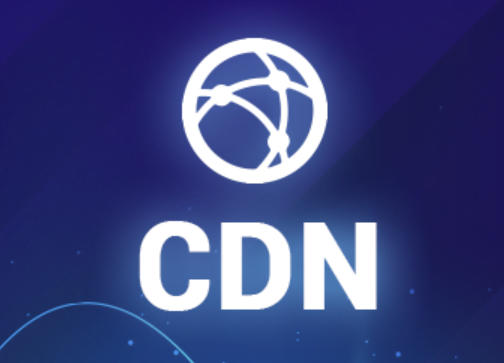
Content Delivery Networks (CDNs) are integral to ensuring fast, reliable content delivery. A critical factor influencing CDN performance is the cache hit rate—the percentage of user requests served directly from the cache without needing to access the origin server. A higher cache hit rate translates to faster load times, reduced bandwidth usage, and better overall user experience.
In this article, we explore how intelligent caching technologies and strategies enable CDNs to maximize cache efficiency and optimize content delivery.
1. Understanding Cache Hit Rates and Their Importance
1.1 What is a Cache Hit Rate?
The cache hit rate measures how often user requests are fulfilled by cached content in edge servers rather than the origin server. A higher hit rate reduces latency and minimizes origin server load.
1.2 Why is Cache Optimization Crucial?
Performance: Faster response times for end-users.
Cost Efficiency: Lower bandwidth costs by minimizing origin server requests.
Scalability: Enables CDNs to handle traffic surges more effectively.
2. Intelligent Strategies to Optimize Cache Hit Rates
2.1 Dynamic Content Caching
Traditionally, dynamic content was considered non-cacheable due to its frequent updates. However, modern CDNs employ intelligent caching strategies to handle dynamic content more effectively:
Content Fragmentation: Separating dynamic and static components for partial caching.
Short-Term Caching: Using low TTL (Time-to-Live) values for frequently updated dynamic resources.
Example: An e-commerce site caching product images (static) while partially caching dynamic recommendations.
2.2 Cache Hierarchies
CDNs use multi-level caching architectures to store content across various layers, including:
Edge Cache: Closest to end-users, serving the majority of requests.
Regional Cache: Acts as an intermediary for less frequently accessed content.
Origin Cache: Holds content not stored in other layers.
Benefit: Reduces latency by distributing cached content intelligently.
2.3 AI-Powered Caching
Artificial intelligence and machine learning help CDNs predict user behavior and optimize caching strategies:
Predictive Caching: AI models analyze traffic patterns to pre-load frequently requested content.
Traffic Analysis: Identifies and prioritizes caching for high-demand resources.
Example: A streaming platform using AI to cache trending videos in advance of peak viewership.
2.4 Cache Invalidation and Purging
Efficient cache management includes real-time invalidation of outdated content:
Event-Triggered Purging: Automatically removes stale content when updates occur.
Versioning: Appends version numbers to URLs, ensuring users always access the latest resources.
Case Study: A news website purges its cache instantly during breaking news updates to maintain accuracy.
2.5 Edge Computing Integration
Edge computing enhances caching by enabling local processing and decision-making at edge servers:
Personalized Content: Generates user-specific responses at the edge while caching common elements.
Reduced Origin Dependencies: Handles computations closer to users, minimizing round trips.
3. Practical Use Cases of Intelligent Caching
3.1 Video Streaming Services
Challenge: Delivering buffer-free streaming to millions of users. Solution: Multi-bitrate streaming cached at edge nodes, dynamically adjusted based on user bandwidth. Impact: Reduced buffering and improved user satisfaction.
3.2 E-Commerce Platforms
Challenge: Handling high traffic during sales events. Solution: Partial caching of dynamic content such as inventory data and checkout pages. Impact: Faster page load times and higher conversion rates.
3.3 Online Gaming
Challenge: Ensuring low-latency access to game assets. Solution: Pre-caching game updates and commonly accessed assets at regional nodes. Impact: Seamless gaming experience for players.
4. Monitoring and Optimizing Cache Performance
4.1 Key Metrics to Track
Cache Hit Ratio: Percentage of requests served from the cache.
Time-to-First-Byte (TTFB): Measures server responsiveness.
Bandwidth Savings: Tracks the reduction in origin server traffic.
4.2 Tools for Cache Monitoring
CDN Dashboards: Built-in analytics to monitor performance.
Third-Party Tools: Solutions like Datadog and Grafana for in-depth insights.
5. Challenges in Cache Optimization
5.1 Handling Personalized Content
Personalized responses can limit cacheability. Solutions include combining edge computing with caching for hybrid approaches.
5.2 Real-Time Updates
Maintaining cache freshness during frequent updates requires robust invalidation mechanisms.
5.3 Multi-CDN Environments
Ensuring consistent cache strategies across multiple CDNs can be complex without centralized control.
6. The Future of Intelligent Caching
6.1 AI and Predictive Analytics
AI-driven models will further refine caching by anticipating user needs based on real-time data.
6.2 Edge-First Caching
The rise of edge computing will shift caching strategies closer to users, reducing dependency on origin servers.
6.3 Green Caching Initiatives
Future caching systems will prioritize energy efficiency, reducing the carbon footprint of content delivery.
Conclusion
Intelligent caching is a cornerstone of modern CDN performance, directly influencing user experience and operational efficiency. By employing advanced strategies such as dynamic content caching, AI-powered optimization, and edge computing integration, CDNs can achieve higher cache hit rates and deliver seamless content globally.
As content demands continue to rise, businesses leveraging intelligent caching solutions will be better equipped to handle traffic spikes, reduce costs, and provide exceptional user experiences.

